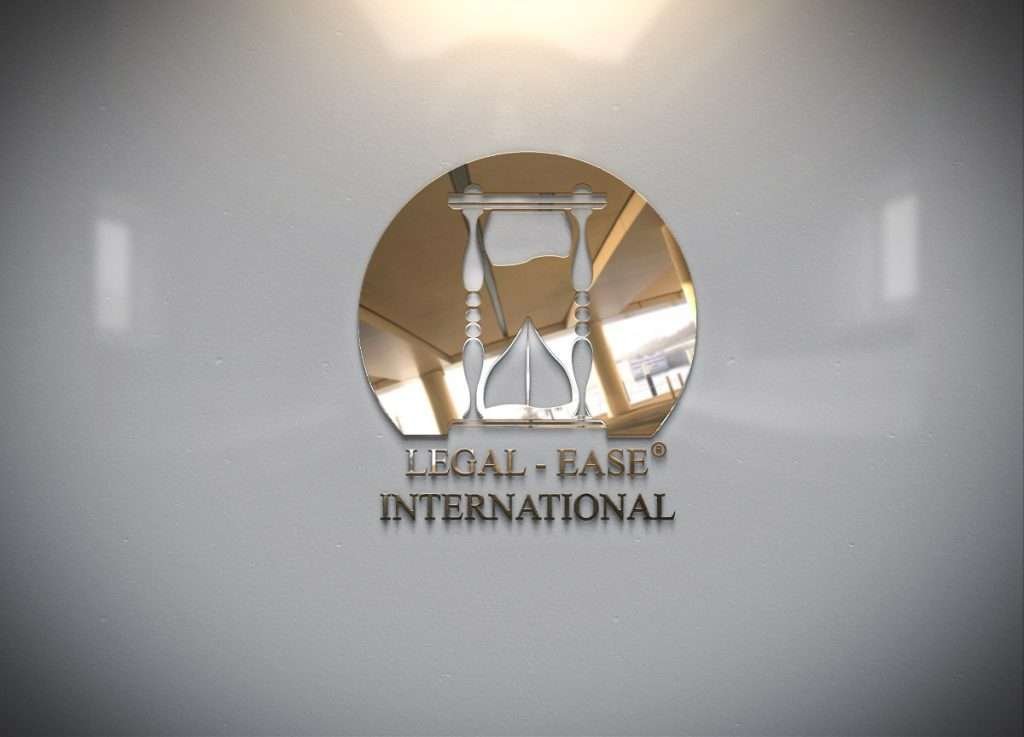
WHAT IS SEXUAL HARASSMENT?
It is a form of harassment that uses explicit or implicit sexual connotations, which may include unwanted and inappropriate promises of rewards in exchange for sexual services. Sexual harassment involves a range of actions, from verbal offenses to sexual abuse or assault. Harassment can occur in a variety of social settings, such as work, home, school, church, etc. Attackers or victims can be both gender and gender.
Sexual Harassment In The Workplace
Sexual harassment in the workplace is a form of sexual discrimination that negatively affects the work environment, undermines gender equality at work, creates unfair employment practices and negatively affects the dignity and well-being of employees. It causes psychological anxiety and stress for victims and, if neglected, can lead to high costs for companies through lost productivity, low employee morale, absenteeism and employee turnover.
Sexual harassment, whether at work, at school, on the street, at leisure or even at home, is a problem that is increasingly recognized in all societies.
According to the US Equal Opportunities Commission:
Gender-based harassment is defined as unwanted sexual assault, sexual services demands, and other verbal or physical behavior of a sexual nature is sexual harassment when:
Submission to such conduct is an explicit or implicit condition of the person’s employment;
The purpose or effect of such conduct is to significantly interfere with an individual’s business or to create an intimidating, hostile or offensive work environment. “
CONCEPT DEVELOPMENT
Sexual harassment is a subjective reality. This is a fact of life for a long time, but the concept of sexual harassment is relatively new, as this concept was first created in the mid-1970s by the United Institute of Working Women. Recently, it has been recognized as a serious problem. The most common is sexual harassment in the workplace, where victims are pressured to provide sexual services in exchange for benefits at work or in a hostile work environment.
TYPES OF SEXUAL HARASSMENT
Ø Gender Harassment: Widespread sexist statements and behaviors that express offensive or degrading attitudes toward women. Examples include offensive commentaries, offensive graffiti, and obscene jokes or humor about sex or women in general.
Seductive Behavior: unwanted, inappropriate and offensive sexual attacks. This may include repeated unwanted sexual calls, persistent requests for dinner, drinks or dates, persistent letters, phone calls, and other calls.
Sexual Bribery: seeking sexual activity or other sexual behavior in order to promise a reward; the design can be open or subtle.
Sexual Coercion: coercion to sexual activity or other sexual behavior through the threat of punishment; examples include negative impact assessment, promotion of promotion, threat of termination.
Sexual Coercion: gross sexual coercion (such as touches, feelings, strong grips) or sexual assault. Of these five types of behavior, gender-based harassment is by far the most common, followed by seductive behavior. In fact, “classic” forms of sexual harassment (bribery and coercion) are relatively rare, while other forms of sexual harassment are more common than most people think. Recent court rulings have also found that certain types of offensive visual elements in the workplace, such as pornography, can be considered sexual harassment.
A characteristic of sexual harassment is that it is undesirable. It is important to make it clear to the aggressor that certain actions are undesirable
EFFECTS OF SEXUAL HARASSMENT
Sexual harassment can destroy your mental health, well-being and professional development. Distraught women often change jobs, career goals, job assignments, educational programs, or academic fields. Additionally, women reported experiencing mental and physical responses that are comparable to responses to other forms of stress. They contain:
Psychological Reactions
Depression, anxiety, shock, denial; Anger, fear, frustration, irritability; Insecurity, shyness, feeling of betrayal; Confusion, feeling of helplessness; Shame, self-esteem, low self-esteem, headache; lethargy; gastrointestinal problems; dermatological reactions; weight fluctuations; Sleep disturbances, nightmares; Phobias, panic reactions; Guilt for Sexual Problems; self-incrimination; Isolation
Career-Related Effects
Decreased job satisfaction; Adverse performance assessment; loss of job or promotion; Decreased academic or professional performance due to stress; Absence; Leaving work or school; Change career goals
WHAT CAN YOU DO IF YOU CONTINUE?
There is no way to respond to harassment. Every situation is different and only you can assess the problem and decide the best answer.
Friends, affirmative action agents, human resources experts and women’s groups can provide information, advice and support, but only you can decide what’s right for you. The one thing you can be absolutely sure of is that ignoring the situation will not make it go away. DO NOT FIND YOURSELF BY HARASSMENT. It’s not your fault. Put the blame where it belongs — on the perpetrator. Self-blame can cause depression and the situation won’t help you.
Many women have found these strategies to be effective:
§ Say NO to the bully! Be direct.
§ Write a letter to the abuser. Describe the event and how you felt. Declare that you want the harassment to stop. Send the letter by registered mail. Keep a copy.
§ Record what happened and when. Give dates, times, places, names of people and witnesses and who told you what.
§ Tell someone; don’t keep it to yourself. If you keep silent about harassment, you cannot stop it. Chances are you are not the only victim of your abuser. A conversation can help in finding support and protecting others from victims.
§ Find out who is responsible for dealing with harassment in your organization and whether you can speak to that person confidentially. Almost all organizations have sexual harassment policies, procedures, and the individuals or consultants who administer them. Find out what the process is like at work or school; It is the organization’s responsibility to provide advice, assistance and support, but these workplace meetings can provide important information if legal action is already appropriate.
§ If you are unionized, talk to a union representative. Unions are generally very committed to eliminating sexual harassment in the workplace.
§ If you have serious mental health issues, you can see a psychologist or other mental health professional who understands the problems caused by sexual harassment.
IMPACTS OF SEXUAL HARASSMENT IN THE WORKPLACE
Sexual harassment is not just a locker room conversation, a compliment, an “innocent” flirtation, or an invitation to a cup of coffee. Harassment in the workplace is a pattern of discriminatory behavior that creates a hostile work environment based on the protected class. They can include verbal assault, abuse of power, sexual reasoning, and aggression such as unwanted touches. Harassment in the workplace has negative consequences for all employees, including reduced performance, low morale and increased employee turnover.
CONSEQUENCES OF SEXUAL HARASSMENT IN THE WORKPLACE
It is almost impossible to underestimate the effects of sexual harassment. Regardless of the exact circumstances, there are many consequences of sexual harassment.
Individual Effects
As you can imagine, the person who is sexually harassed in the workplace is the one who suffers the most. Emotional effects include anger, shame, guilt and fear. Sexual harassment can also impair the victim’s self-esteem and cause anxiety attacks.
Emotional effects are definitely not the only effects when someone is sexually harassed in the workplace. Because a person’s physical health is closely related to his emotional health, there are physical reactions to sexual harassment. These include loss of appetite, nausea, weight loss or gain, headaches, migraines and loss of sleep. Victims also suffer from high blood pressure and may start abusing alcohol or other substances. Emotional and physical consequences often lead to financial losses. Victims who are afraid of harassment may take unpaid leave. In serious cases, they leave work for other lower-paid jobs or for longer commutes to avoid further sexual harassment. Such movements can create wave effects that permanently damage one’s career path.
Implications For Society As A Whole
Many people are surprised by the effects of sexual harassment in the workplace on others and on the workforce as a whole. The victim of sexual harassment will certainly act less effectively due to the physical and emotional effects of the harassment. Over time, the number of victims of harassment may increase as harassment attacks multiple victims in a row or creates a culture of accepting harassment in the workplace. This effect can lead to the entire team and department suffering from increased staff turnover.
In addition, companies almost certainly experience productivity losses because employees are often ill, suddenly fired, or dissatisfied.
Another consequence of sexual harassment in the workplace is a decline in corporate morale. A hostile work environment can demoralize an entire team or department. High turnover creates additional stress for employees who choose to stay in the company, while employees who witness sexual harassment experience “presents” and “leave” the toxic workplace for fear of retaliation.
Finally, companies can destroy their reputation and profitability through sexual harassment lawsuits.
Social Effects
The consequences of sexual harassment in the workplace do not end at the societal level. The EEOC reported an average of around 13,000 sexual harassment complaints each year from 1997 to 2011. And these were the only sexual harassment complaints reported!
Although the actual number of sexual harassment cases is unknown, the Deloitte study estimated the economic impact of sexual harassment in the workplace in Australia in 2018 at more than $ 2.6 billion. This figure includes not only the loss of productivity but also the cost of medical care. , psychiatric treatment and therapy, research and complaint handling of sexual harassment and loss of well-being of victims.
In short, sexual harassment is not just an individual problem. It is a social problem that affects us all one way or another.
Conclusion
Harassment at work is an ethical business issue. Every individual must be aware of its consequences because it has a huge impact on the organization. As already mentioned, the goals of violent behavior will suffer psychological damage, if a problem arises in the organization; the organization will spend the amount on some training and employment courses. Organizational culture is also a component that affects the status quo of harassment at work. It is important that employees raise their voices and recognize signs of abuse to prevent certain types of mental illness. by Dena Falken www.legalenglish.com


